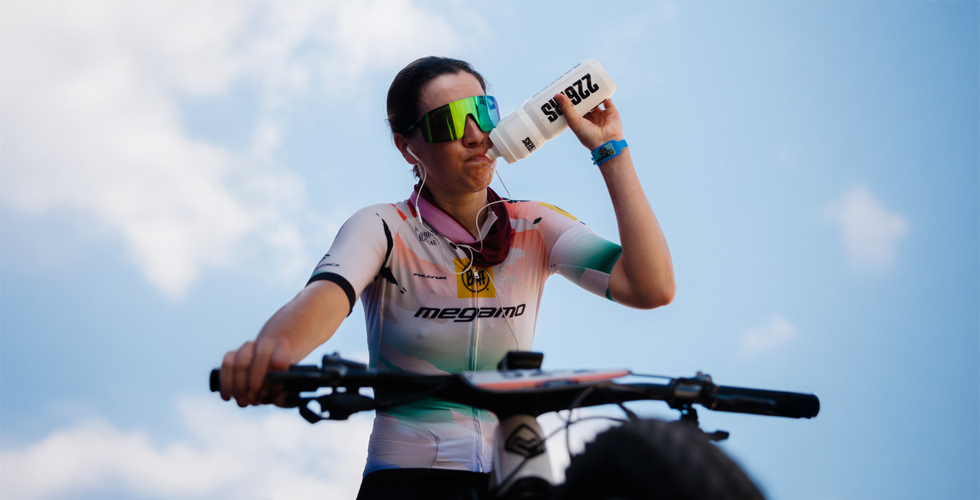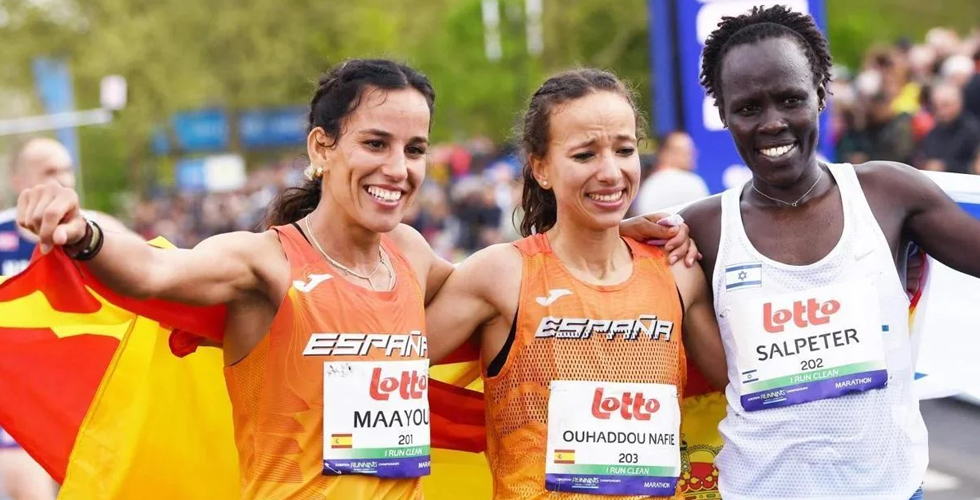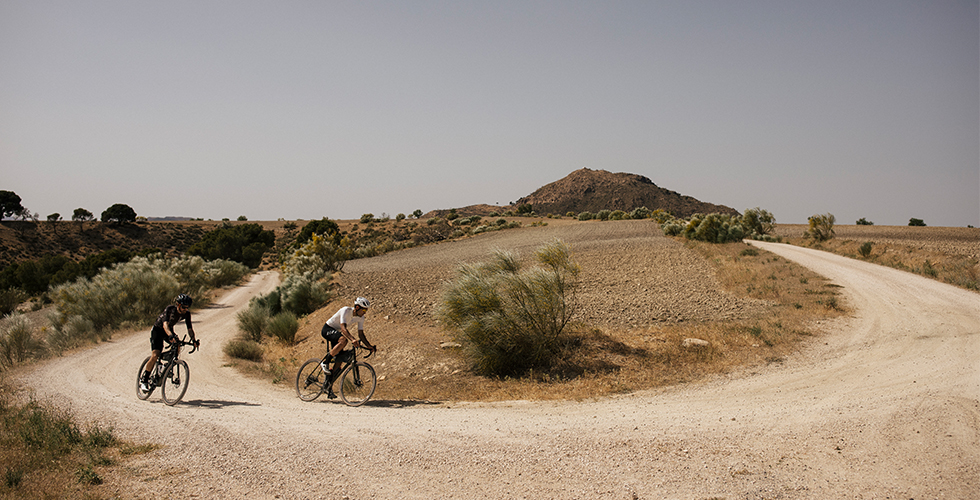For sure all those mountain bikers, amateur and racers, have noticed they need to intake liquids, food and supplements during their rides and workouts. Who hasn’t had a performance drop, bonked or cramped during a race or workout?
According to the goal, the athlete’s level and kind of workout, it’s suitable to include certain supplements that could help improve performance and optimise recovery. Following you’ll know how, when and why.
Tabla de contenidos
ToggleThe importance of nutrition for MTB
MTB is an endurance cycling discipline lasting one to eight hours at variable intensity, from moderate to maximal. This is why during a mountain bike ride or competition, all the metabolic energy range is reached (fat oxidation, carbohydrate oxidation, lactic acid production). This might entail that the energy or liquid body stores aren’t enough, requiring additional liquid carbohydrate or even any other supplementation in order to improve performance and get the cyclist recovered for the next training session.
The importance of nutrition for MTB
MTB is an endurance cycling discipline lasting one to eight hours at variable intensity, from moderate to maximal. This is why during a mountain bike ride or competition, all the metabolic energy range is reached (fat oxidation, carbohydrate oxidation, lactic acid production). This might entail that the energy or liquid body stores aren’t enough, requiring additional liquid carbohydrate or even any other supplementation in order to improve performance and get the cyclist recovered for the next training session.
Energy products for MTB
One of the main considerations is the energy supply during rides, especially when these over ninety minutes or are at high intensity. If so, the cyclist must worry about intaking carbohydrates, since the body’s stores are limited, opposed to those of fat.
Hence and as explained in another article (The Best Supplements for Cyclists), supplying 30 to 90 grams of carbohydrates per hour is quite suitable, as long as a progression is followed until the cyclist can properly tolerate this intake.
There are several options:
- Energy bars: for long low intensity workouts and when the terrain allows to take the hands off the handlebar to eat the bar safely or at a stop.
- Energy gels: for intense workouts or competitions. 50 gram carbohydrate gels are suitable when the carbohydrate intake per hour is high (90 to 120 g/h). A great amount of additional energy can be easily carried in a small space.
- Sports drinks: a very good alternative that provides sustained carbohydrates and hydration. The only inconvenience during long rides is that it runs out and needs to be replenished somehow, either enriching water with electrolytes or dissolving unitary sachets.
What to intake before a MTB ride
It’s common before a MTB ride to have eaten, either breakfast or lunch, unless the aim is to train fasted to optimise fat metabolism.
Meals previous to workouts must be rich or moderately rich in carbohydrates, depending on the workout’s intensity and duration, and foods shouldn’t make digestion difficult. Past, rice, legumes, cereals, bread, fruits and vegetables are the most suitable.
Nevertheless what could happen is that the last intake before the ride is too early and when it’s time to start, the cyclist feels “empty” or hungry. If so, having a fruit (banana), or even a gel minutes before the workout can help.
Some athletes want or need certain “stimulation”, so a coffee, if s/he is used to it, or a pre-workout drink can also be useful. (When to intake a pre-workout)
Foods and supplements during the ride
As the duration or intensity of the ride increase, it will be necessary to increase the use of supplements and foods, which must be planned ahead to carry them during the ride.
On one side the liquids, which are more necessary when it’s hot and humid, having to choose the number of bottles to carry, their size or even carrying a hydration pack.
On the other side the energy in the form of carbohydrates, such as explained previously, with bars, gels or sports drink. Nevertheless, foods such as bananas, marmalade or quince sandwiches, or dates, can be used as complements.
Post workout recovery: what to eat
Once the workout or ride is over, you shouldn’t make the mistake of thinking everything is over. This is when the most important part begins, proper recovery ensures the best conditions for the next workout.
The basics are hydration + energy + protein. A simple and practical way to do it, is to use a recovery drink or recovery shake, which contains everything previously mentioned. Nevertheless, there are alternative foods which can be easily prepared at home, as long as there’s time for it.
Liquids can be replenished with water or milk, energy with fruits or cereals, and protein with whey protein or foods rich in proteins. Combining everything, these are some “homemade recovery” examples:
- Low fat greek yogurt with strawberries and blueberries.
- Oats with yogurt, honey and protein powder.
- Tuna sandwich + fruit
- Boiled egg + fruit shake
Hydration and electrolytes for MTB
A fundamental aspect for a mountain biker is hydration. Water has a main thermoregulation function. Through sweat, the body cools down and eliminates excess heat caused by exercising. Hence, when it’s hot and humid, during long and/or intense workouts (or all together), liquid and electrolyte intake is fundamental in order to keep the body’s temperature estable, maintain performance and avoid problems linked to dehydration, such as cramps, heat strokes or even cardiac issues.
To keep an adequate hydration it’s suitable to generally intake between 500 to 800 ml of liquid per hour, as long as it matches the cyclist’s sweat loss. For a better absorption of these liquids and to protect the body from this mineral loss, it’s preferable to also intake electrolytes rather than only water. Hence, isotonic drinks or drinks enriched with electrolytes (sodium, potassium, magnesium), are interesting for any cyclist in any “sweaty” environment.
Practical tips for an optimum nutrition
To end and complete this article, we can provide a number of tips for any cyclist or mountain biker, in order to improve performance or enjoy the ride:
- Following a varied diet including fruits and vegetables daily.
- Carbohydrate periodisation, ingesting a larger amount on intense or race days, reducing them on easy or rest days.
- Looking after recovery, replenishing the liquids lost and adding a small snack (fruits, protein, recovery), once the workout is over.
- Instead of increasing food portions because of riding, increasing carbohydrate intake (gels, sports drink, bars), during the rides.
- Planning nutrition ahead of workouts, particularly how to carry carbohydrates and liquids, or how to get them during the ride.
- Racers shouldn’t try anything new on race day, and train the digestive system by testing the race nutrition plan during workouts.





